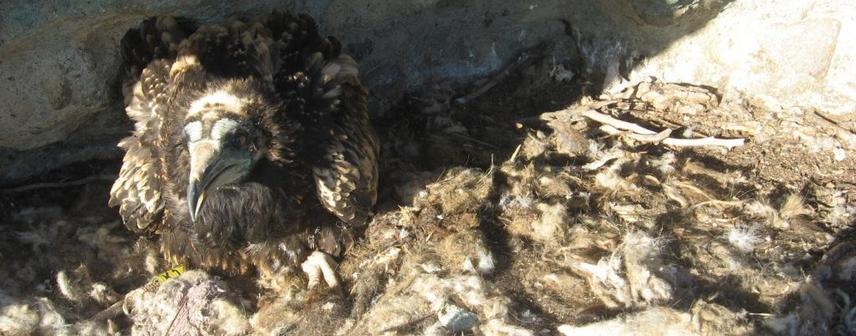Ivaylo Angelov
The project aims to ensure the long-term conservation of the globally endangered Egyptian vulture, by implementing priority activities from the National species action plan for 2009 and 2010.

During the last six years, the Egyptian vulture population in Bulgaria experienced sharp decline by 39%, reaching 35 pairs in 2008 from 57 in 2003. In 2007, the species was uplisted to “Endangered” in the IUCN Red Data List, following large decline throughout its whole range.

Amongst the most severe threats to the Egyptian vulture population in the breeding grounds are the various accidents of poisoning, occurring after consumption of contaminated or poisoned carcasses.
The project aims to ensure the long-term conservation of the globally endangered Egyptian vulture, by implementing priority activities from the National species action plan for 2009 and 2010. The specific objectives are:
1) to support Egyptian vulture survival during the breeding period;
2) to reveal unknown threatening factors, regarding food contamination and consecutive chemicals accumulation in the unfledged juveniles;
3) to develop human capacity to continue the conservation work on Egyptian vulture in the future;
4) to raise the public awareness on the subject among the local communities.
Activity 1: Supplementary feeding: Additional food will be supplied once a week to the population in the Roussenski Lom area. 2-3 kg of fresh meat will be disposed on cliffs (within 300-500 meters of the nests), which are easily accessible for the vultures and out of reach of ground carnivores. This will increase the adult survival and the breeding success.
Activity 2: Toxicology sampling and colour ringing of juveniles: Blood samples and eye, throat and cloacae secretion will be taken from 10 unfledged juveniles and sent for analysis to the Natural History Museum in Madrid. The juveniles will be ringed with plastic colour rings. It is necessary to reveal unknown limiting factors and guide future conservation activities.
Activity 3: Training and involvement of local team members: Six local team members (biology students) will be trained in monitoring, toxicology sampling, ringing and community education. These people will come from different regions where vulture subpopulations exist. It will secure the availability of local experts in the future.
Activity 4: Local communities and authorities education: Meetings with village mayors, Regional Inspectors of Environment, hunters and other local groups, will be carried out to explain the need for the species conservation and promote cooperation.
In conclusion the project will support the species existence during the breeding period, reveal unknown threats, implement local community education and involvement and finally improve the capacity of our project team to continue the conservation work in the future.